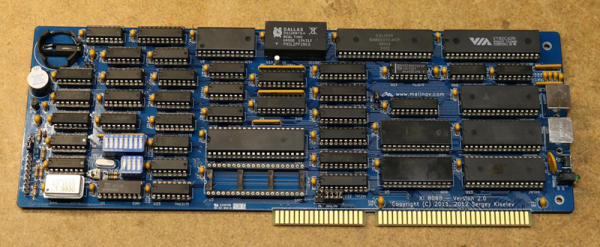The BeagleBone famously fits in an Altoids tin. Even though we now have BeagleBone Blacks, Blues, and Greens, the form factor for this curiously strong Linux board has remained unchanged, and able to fit inside a project box available at every cash register on the planet. There is another Altoids tin, though. The Altoid mini tin is just over 60×40 mm, and much too small to fit a normal size BeagleBone. [Michael Welling] has designed a new BeagleBone to fit this miniature project box. He’s calling it the Pocketbone, and it’s as small as the mints are strong.
The Pocketbone is based on the Octavo Systems OSD355x family, better known as the ‘BeagleBone on a chip’. This chip features a TI AM355x ARM Cortex A8, up to 1GB of DDR3 RAM, 114 GPIOs, 6 UARTs, 2 SPIs, 2x Gigabit Ethernet, and USB. It’s housed in a relatively large BGA package that makes routing easy, and as a proof of concept [Jason Kridner] built a PocketBone in Eagle.
[Michael]’s version of the Pocketbone is based on the earlier proof of concept, with a few handy additions. There’s an IO expansion header, provisions for a battery input, a few fixes to the USB, and all the parts are on one side of the board facilitating easier assembly. This version of the Pocketbone was created using KiCad, which will endear the project to the Open Source community.

















